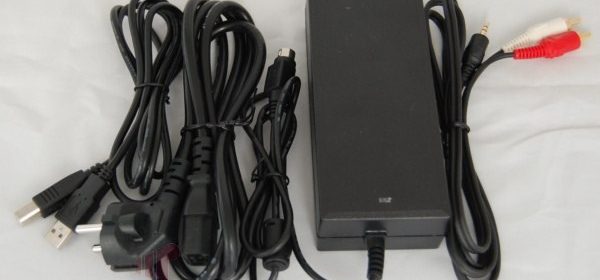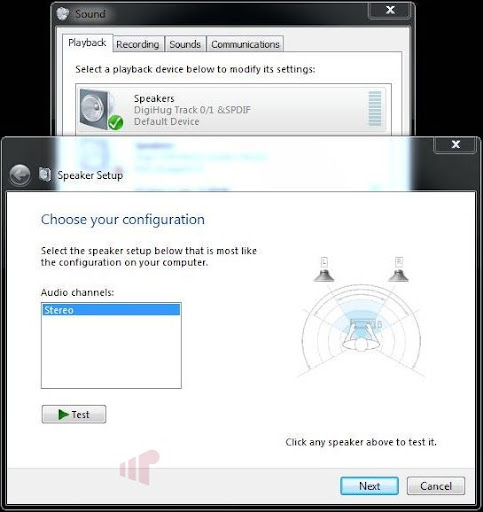OrigenAE M7 – Stereo Amplifier

Home theater PC chassis manufacturer OrigenAE has consistently produced some of the most lust worthy high-end cases available on the market today. Intended as a companion to their M10 mini-ITX enclosure, the M7 integrated stereo amplifier marks the company’s first foray into the audio space. Offering impressive specifications at an MSRP of $595 this little aluminum enclosed 25W hi-fi is targeted at the space limited audiophile who needs to support multiple devices.
Unboxed:
Specifications:
|
Dimensions: |
9.45” (W) x 9.84” (D) x 2.95” (H) |
|
Weight: |
6.17 lb |
|
Power Output: |
25 W per channel @ 8 Ω / 50 W per channel @ 4 Ω |
|
Frequency response: |
5Hz ÷ 120kHz (-3dB) |
|
Signal-to-noise ratio (SNR): |
> 85dB |
|
Total harmonic distortion (THD): |
< 0.05% (5Hz ÷ 120kHz) |
|
Input sensitivity: |
1.7dB @ 1kHz |
|
Channel Separation: |
> 70dB @ 1kHz |
|
Inputs: |
3 x RCA stereo / 1 x USB |
|
Outputs: |
2 x speaker binding posts (accepts banana plugs) |
|
Power Consumption: |
Standby – N/A, Speakers Off – 25W, Speakers On – 27W, Playback – 29W |
With a thick brushed aluminum exterior and reassuring heft, the OrigenAE M7 oozes build quality. Across the front of the amplifier we find controls for power, high/low gain, balance, volume, input selection (USB, Aux, CD, Tuner) and speaker on/off as well as a 6.35mm stereo connector. An infrared receiver is notably missing however, so it is a good thing that all of the controls have excellent feel with the perfect amount of resistance to the twists and presses that are to come. Two banana plug compatible speaker binding posts are located on the far left and right of the back panel where we also find one USB audio and three RCA stereo connectors keeping the power input company. The device is clearly intended to used with a PC so the USB option was an understandable choice, but the amplifier’s versatility suffers because it lacks both a remote and, with many audio/video components shedding analog outs, S/PDIF inputs for the other sources.
The review sample included one A-to-B USB cable, 3.5’’ to RCA stereo adapter and a power cord and 24V/5.0A brick. Looking closely at the picture shows that a European power cord was supplied (US spec will be provided with shipping units), but the brick is universal so a standard PC power cord will work.
Usage:

When plugged into a PC, the M7 is automatically detected and the audio device drivers install without any user intervention. Unsurprisingly the audio device exposes left and right channels, but I was a bit surprised to find only analog capabilities listed in the speaker properties dialog. This is my first experience with a USB audio device so I am unsure if that is typical, but is worth noting. When connected to a PC, audio quality was significantly better using USB than an analog connection; other analog sources such as the Dune BD Prime 3.0, were just as good as USB from the PC so the issue was most likely due to the lack of a discrete sound card in the system.
To probe the M7’s limits, three varied sets of speakers were tested:
- Yamaha NX-220P: small bookshelf (6Ω /100W Max), limited range
- Pioneer S-HF41-LR: large bookshelf (8Ω /160W Max), full range
- Definitive Technology Promonitor 1000: midsize bookshelf (8Ω /200W Max), full range
Because of their intended application (limited surround speakers with a separate subwoofer), I was not shocked to find that the M7 easily overwhelmed the Nx200-ps. It was surprising however that the 25W rated amplifier was comfortably able to push both the Pioneer and Definitive Technology speaker pairs well past reasonable volumes with excellent high and midrange clarity as well as deep bass in the “low gain” configuration. Combining the M7 and Promonitor 1000s produced the best listening experience of the three sets, and actually significantly outperformed the same speakers paired with the reference Denon AVR-1909 most notably at louder volumes.
Judged only on audio capability the amplifier is quite impressive, but there were a couple oddities worth noting. First, while the balance toggle does adjust the audio volume pushed left-to-right, the switch is mostly useless in application because turning it all the way to either side only lowers the opposite channel’s volume by an insignificant amount. The second is that it takes almost thirty seconds for this M7 to turn on completely going through several cycles of where a loud click is heard and the power LED briefly turning red then off again. This issue is specific to early samples and will not be present in shipping units according to OrigenAE, but was documented anyway in the interest of full disclosure.
Conclusion:
Providing excellent sound from a tiny package, the OrigenAE M7’s size belies it capability as a high quality stereo amplifier. As a companion for a dedicated audio device it provides significant value even at its $595 MSRP. Unfortunately, the device’s versatility in a broader home theater application is quite limited given the lack of a remote and standby mode for faster startup even though it supports multiple inputs. Longer term, I hope OrigenAE judges the M7’s success in that context and look forward to a subsequent revision which provides both features as well as S/PDIF inputs for better future compatibility.
Pros:
- Sounds great
- Excellent build quality
- Small
Con:
- No remote
- No standby mode
- No digital inputs
Thanks to Perfect Home Theater for providing the review sample.

This looks really neat, but
This looks really neat, but it seems far more expensive than it should be. I’ve been looking for something like this, a small amplifier/receiver that can be hooked up in the bedroom to 1-3 devices and small set of bookshelf speakers to provide better sound than I can get out of a TV. This seems like almost exactly what I’m looking for, except that it costs more than the TV that would be going in the bedroom and its even more expensive than my Denon AVR1910 in my living room. I really can’t justify that kind of expense here so such a niche product. I think this needs to be $250 or less, because for $600, I could probably buy a far more capable receiver along with the storage, wiring and RF remotes needed to hide it.
Are there any competing products like this on the market? I haven’t searched in a while, but I should.
I thought the same thing
I thought the same thing about the price until listening to it with the DefTech speakers; to get the same level of quality would be much more expensive in an AVR.
It is true that the audience for this kind of device is pretty limited, especially because in its current state (i.e. no remote) the M7 isn’t that versatile.
Instead of this product I
Instead of this product I would like to see more companys doing what MSI did with their MSI Media Live Diva motherboards. It had a built in 5.1 amp on the motherboard.
While ultimately it was a failure because they went with cheap components, it was a fantastic idea. Why use an external sound system when you can connect all of your speakers directly to the computer.
You could even upgrade it to a 7.1 system!
I would love to see someone implement this into an i3 motherboard. In my opinion, that would be the ultimate HTPC system.
I had a chance to evaluate
I had a chance to evaluate the OrigenAE M7 for a few weeks and completely agree with Andrew’s review.
Powering similar Definitive Technology full range speakers the M7 really does sound great–much better than I had expected even after reading the review.
The lack of digital input didn’t bother me since I still prefer analog for listening to music but no external volume control is a bit tough for the price point.
What I would love to see is the USB port (or a 2nd) use for two things:
1- Standy synchronization. i.e. only turn on when the USB has power from the HTPC
2- Volume control. I like my HTPC controlling everything w/o the use of IR blasting.
Price of M7 has been dropped
Price of M7 has been dropped to $469.00 recently.